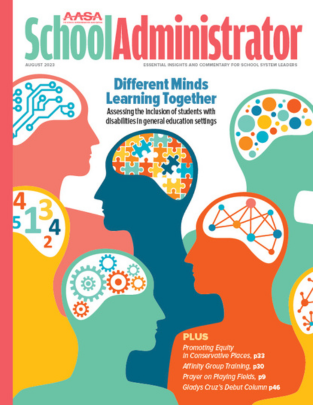
Integrating AI as an Analytics Collaborator
The excitement surrounding generative artificial intelligence brought on by ChatGPT has educators wondering how AI can be used responsibly to improve student success. We can grasp the potential power of this technology if we change our mental models about the role data play in helping students.
AI models are a valuable system that use data to extract meaning from data. The consequence of this abstraction is we must transition our practices away from interfacing with data, and instead move to interfacing with AI models as a virtual analytics collaborator. In other words, educators will use AI models to help them interpret data and make more informed decisions about goal setting and success.
Helpful Models
In my work, I have observed in more than 1,000 districts how AI is emerging within K-12 education. Three cases of use stand out as widely supported by AI models. These areas are personalized learning, goal setting for school improvement and program evaluation/academic return on investment analysis. Each case uses local school district data to train a specific AI model.
Personalized learning. This practice matches district programs and resources with individual students who are most likely to benefit from them, given their academic achievement, growth, interests, motivations or other factors. AI models are widely used in this capacity to create personalized growth trajectories for individual students.
Goal setting for school improvement. Educators improve achievement by setting annual goals for student out comes that, if reached, demonstrate continuous quality improvement. Instead of qualitatively setting a goal to “improve grade 5 reading by 5 percent,” AI models learn from existing district data to set goals automatically given the personalized growth trajectories of individual students being served by a school, district, program or other structure for which a goal is needed. Allowing AI to suggest goals automatically based on district data allows for much greater efficiency and equity.
Program evaluation/academic return on investment. Return on investment is the practice of documenting the impact a program or intervention has on student growth rates. Instead of lengthy, expensive processes to evaluate individual programs one by one, AI models are trained to evaluate every program every year automatically, allowing districts to be more evidence-based in their practices.
Key Considerations
School districts that use AI should establish appropriate guardrails and policies. First, school systems need to be deliberate and intentional about the data they allow AI models to “learn” from.
The old cliché “garbage in, garbage out” is a serious concern. For example, allowing AI models to incorporate student demographic data into their learning could result in an AI model that discriminates in ways that perpetuate inequities.
Most importantly, AI models should serve as a virtual collaborator that works with educators, not in place of educators. If used in this capacity, AI models play the role of an additional voice in the room with specific expertise.
While it is tempting to think of AI as a panacea, the future of AI within a school system will never replace the most difficult work of educators: building learning communities and defining student success in a way that is aligned to local values. That said, the continued development of AI as an effective thought partner for how to best address student needs to ensure all students reach their full potential will be exciting to watch.
Questions?
E-mail: johngatta@ecragroup.com







